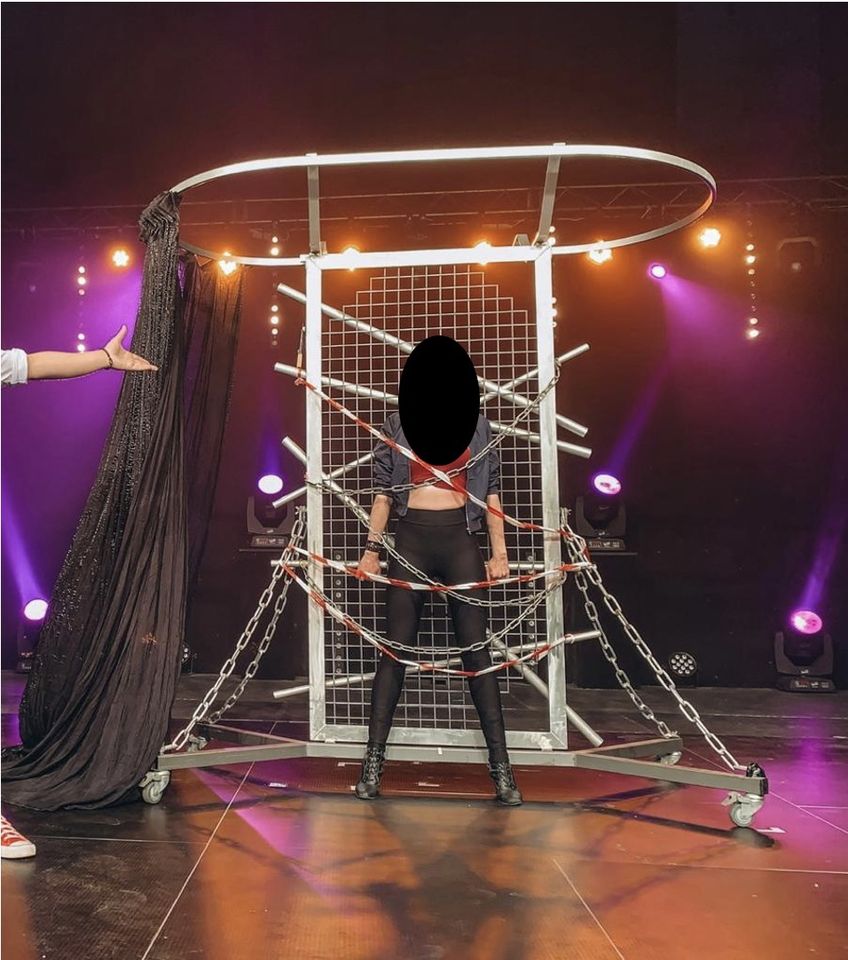For some reason I’ve never really liked the Assistant’s Revenge Illusion. I think that from a method standpoint, it works exactly how anyone would think it does. If you’re not familiar with the trick, here’s what it looks like:
What the trick has going for it is that it has a nice surprise, where the audience is expecting the magician to escape, but it’s a substitution. I’m going to imagine it packs pretty flat and it plays big. I’m not knocking anyone that does the trick, I just think the trick is just “meh”.
Recently this one popped up for sale:

This pic is what got me thinking about why I don’t like the trick. The chains end up soo loose on usually the female “assistant” that there’s really no reason why the person couldn’t just slip out. If you watch the video above, you can see how loose they are at the end. I do understand that at the beginning they are tight, but that’s not the final image the audience is left with.
The trick would be greatly improved with some sort of handcuff type restraint, but I also think that would make the switch much slower.
-Louie
